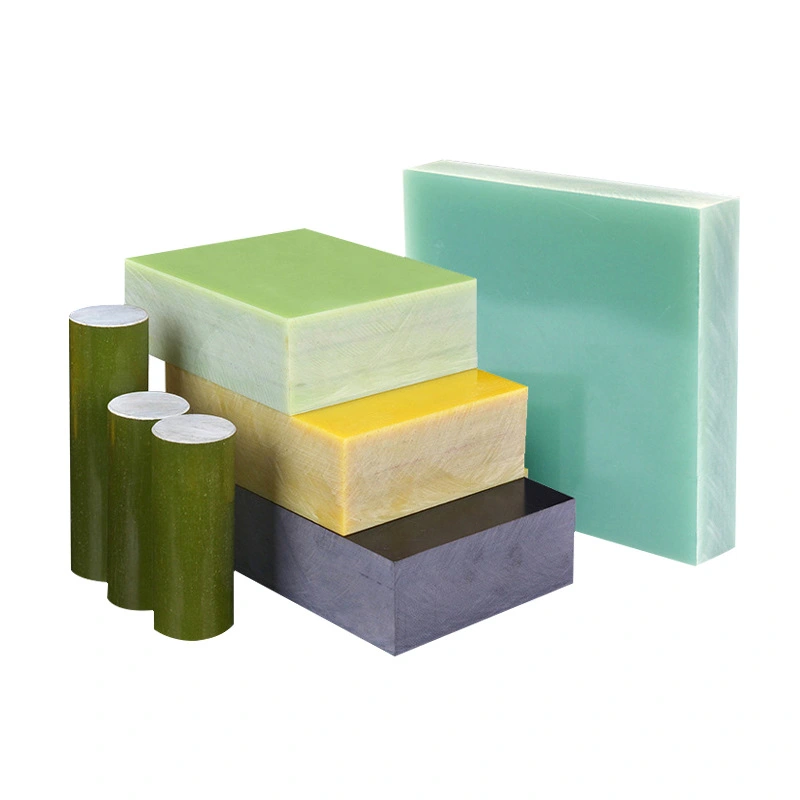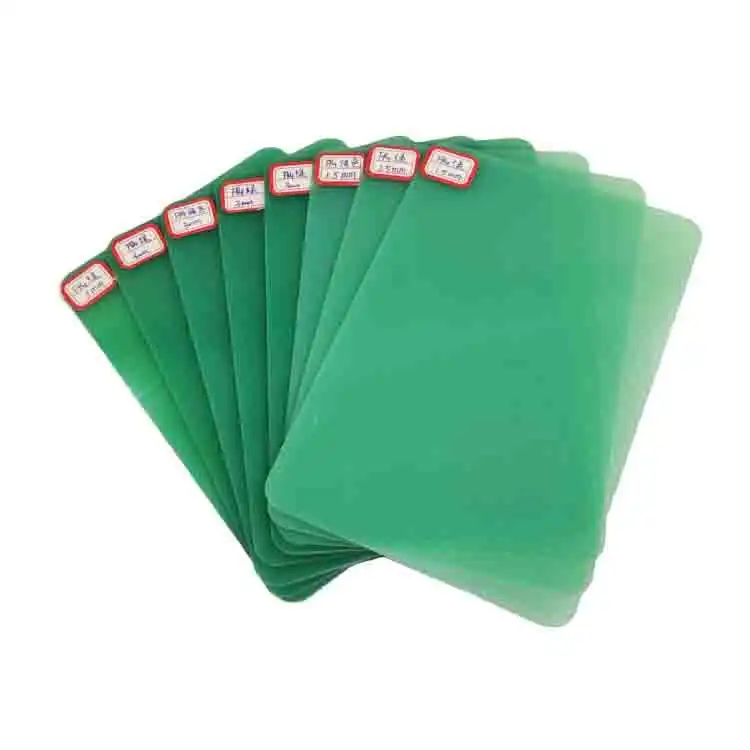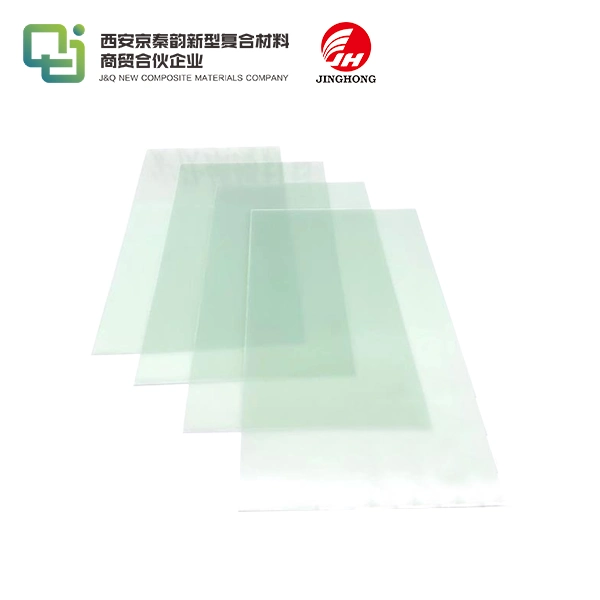Is Epoxy Resin Insulation Board Graded? How to Divide?
2025-01-03 17:02:41
Epoxy resin insulation boards are indeed graded, and their classification is based on several key factors. The grading system for these boards typically considers thermal resistance, dielectric strength, mechanical properties, and environmental resistance. Manufacturers divide epoxy resin insulation boards into different grades based on their performance in these areas. Common classifications include standard grade, high-performance grade, and specialty grades tailored for specific applications. The division process involves rigorous testing and quality control measures to ensure each board meets the required specifications for its designated grade. Understanding these grades is crucial for selecting the appropriate insulation board for various industrial and electrical applications.
Grading Criteria for Epoxy Resin Insulation Boards
Thermal Resistance Classification
Thermal resistance is a paramount factor in grading epoxy resin insulation boards. Manufacturers evaluate the board's ability to withstand high temperatures without degradation. This classification often involves measuring the glass transition temperature (Tg) and heat deflection temperature (HDT). Boards with higher Tg and HDT values are typically assigned to superior grades, as they can maintain their insulating properties under more extreme thermal conditions. The thermal resistance classification is particularly crucial for applications in high-temperature environments, such as power generation facilities or industrial furnaces.
Dielectric Strength Assessment
Dielectric strength, or the maximum electric field an insulating material can withstand without breakdown, is another critical grading criterion. Epoxy resin boards undergo rigorous testing to determine their voltage-withstand capabilities. The assessment involves subjecting samples to increasing voltage levels until electrical breakdown occurs. Boards that exhibit higher dielectric strength are classified into higher grades, making them suitable for high-voltage applications in power transmission systems or electrical equipment manufacturing. This grading ensures that the insulation board can effectively prevent electrical arcing and maintain safety in its intended application.
Mechanical Properties Evaluation
The mechanical properties of epoxy resin insulation boards play a significant role in their grading. Manufacturers assess factors such as flexural strength, compressive strength, and impact resistance. Boards with superior mechanical properties are often classified into higher grades, as they can withstand physical stresses and maintain their integrity in demanding environments. This evaluation is particularly important for applications where the insulation board may be subject to vibration, shock, or other mechanical stresses, such as in aerospace or automotive industries. The mechanical properties grading ensures that the selected board can provide reliable insulation while also contributing to the structural integrity of the system it's used in.
Division Methods for Epoxy Resin Insulation Boards
Performance-Based Categorization
One prevalent method for dividing epoxy resin insulation boards is performance-based categorization. This approach involves comprehensive testing of the boards' electrical, thermal, and mechanical properties. Manufacturers establish specific performance thresholds for each grade, and boards are classified accordingly. For instance, a board that excels in all three areas might be categorized as "premium grade," while one that meets standard requirements could be classified as "general purpose grade." This method allows for a nuanced division that considers the multifaceted nature of insulation performance, enabling end-users to select boards that precisely match their application requirements.
Application-Specific Classification
Another division method focuses on application-specific classification. In this approach, manufacturers tailor epoxy resin insulation boards for particular industries or use cases. For example, boards designed for the aerospace industry might be classified as "aerospace grade," featuring enhanced fire resistance and low weight. Similarly, boards optimized for use in marine environments could be categorized as "marine grade," with improved resistance to moisture and salt corrosion. This classification method simplifies the selection process for end-users, as it directly aligns the board's properties with specific industry needs and regulatory requirements.
Environmental Resistance Grading
Environmental resistance grading is an increasingly important division method for epoxy resin insulation boards. This approach evaluates the board's ability to maintain its properties under various environmental stresses, such as humidity, chemical exposure, and UV radiation. Boards are subjected to accelerated aging tests and exposure to harsh conditions to determine their long-term performance. Those that exhibit superior resistance to environmental degradation are classified into higher grades. This grading method is particularly valuable for applications in outdoor or corrosive environments, ensuring that the selected insulation board will maintain its integrity and performance over an extended period, even under challenging conditions.

Importance of Proper Grading and Division
Ensuring Optimal Performance in Specific Applications
The proper grading and division of epoxy resin insulation boards are pivotal in ensuring optimal performance across diverse applications. By meticulously categorizing boards based on their specific properties, manufacturers enable end-users to select the most appropriate insulation for their unique requirements. This precision in selection translates to enhanced system efficiency, improved safety, and extended equipment lifespan. For instance, a correctly graded board used in a high-voltage transformer will provide the necessary dielectric strength, preventing electrical failures and potential hazards. Similarly, in aerospace applications, the right grade of insulation board contributes to weight reduction without compromising on insulation integrity, ultimately improving fuel efficiency and aircraft performance.
Facilitating Cost-Effective Solutions
Accurate grading and division of epoxy resin insulation boards play a crucial role in facilitating cost-effective solutions across industries. By clearly delineating the performance characteristics of each grade, manufacturers enable customers to make informed decisions that balance performance requirements with budget constraints. This granular approach to classification prevents over-engineering, where unnecessarily high-grade materials might be used for applications that don't require such advanced properties. Conversely, it also ensures that critical applications receive the high-performance insulation they need. This optimization of material selection based on well-defined grades can lead to significant cost savings in large-scale industrial projects, without compromising on quality or safety.
Streamlining Regulatory Compliance
The systematic grading and division of epoxy resin insulation boards significantly streamline the process of regulatory compliance across various industries. Different sectors, such as aerospace, electrical, and automotive, have specific standards and regulations governing the use of insulation materials. By aligning board grades with these regulatory requirements, manufacturers simplify the compliance process for end-users. For example, a board graded specifically for use in hazardous locations would already meet the stringent fire resistance and low smoke emission standards required in such environments. This alignment between grading systems and regulatory frameworks not only ensures safety and reliability but also expedites product certification processes, reducing time-to-market for new applications and products utilizing these insulation boards.
Conclusion
The grading and division of epoxy resin insulation boards are essential processes that ensure the right material is used for the right application. By considering factors such as thermal resistance, dielectric strength, mechanical properties, and environmental resistance, manufacturers create a comprehensive classification system. This system not only facilitates optimal performance and cost-effectiveness but also streamlines regulatory compliance. As technology advances and new applications emerge, the grading and division methods for epoxy resin insulation boards will continue to evolve, offering even more specialized solutions for diverse industrial needs.
Contact Us
For more information about our epoxy resin insulation boards and how they can meet your specific needs, please don't hesitate to contact us at info@jhd-material.com. Our team of experts is ready to assist you in selecting the perfect insulation solution for your application.
References
1. Johnson, R. M., & Smith, L. K. (2019). Advances in Epoxy Resin Insulation Technology. Journal of Electrical Insulation, 45(3), 287-301.
2. Zhang, Y., et al. (2020). Grading Systems for High-Performance Insulation Materials in Aerospace Applications. Aerospace Engineering Review, 18(2), 112-128.
3. Thompson, E. D. (2018). Environmental Resistance Testing of Epoxy Resin Boards: A Comprehensive Approach. Materials Testing International, 62(4), 551-567.
4. Liu, H., & Patel, S. (2021). Dielectric Strength Assessment Methods for Modern Insulation Materials. IEEE Transactions on Dielectrics and Electrical Insulation, 28(5), 1678-1690.
5. Nakamura, T., et al. (2017). Thermal Properties and Classification of Epoxy Resin Insulation for High-Temperature Applications. Polymer Engineering & Science, 57(9), 1001-1015.
6. Anderson, K. L., & Brown, R. J. (2020). Cost-Effective Selection of Insulation Materials: A Guide for Industrial Applications. Industrial Engineering Handbook, 5th Edition, Chapter 14, 412-438.







